-
American Goldfinch (1)
-
American Robin (1)
-
Baltimore Oriole (1)
-
Blue Jay (1)
-
Bluebirds (1)
-
Carolina Wren (1)
-
Chickadee (1)
-
Ducks (1)
-
Starling and House Sparrow (1)
-
House Finch (1)
-
House Wren (1)
-
Hummingbirds (5)
-
Northern Cardinal (1)
-
Northern Mockingbird (1)
-
Nuthatch (1)
-
Owls (3)
-
Tufted Titmouse (1)
-
Woodpeckers (6)
Birding: Up Close and Personal! Window Feeders
The dog days of summer are upon us! You love watching your backyard birds, but the heat, my goodness, the heat! And let's not even start talking about the humidity! Fast forward 6 months. You still love watching those birds; but the temps are single-digit and there's snow on the ground. Maybe not the best environment to be hanging around outdoors. Or perhaps you're not an outdoor person at all, but you still like to watch birds through a window. If any of these scenarios apply to you, how about considering a window bird feeder?
I was a bit skeptical and reluctant myself at first. Are birds really going to come this close? Is this safe for birds? What about my window screens? What if it falls off? My analytical nature was prompting me to ask question after question in my mind. But in the end my rational side won out and I decided to give it a try. Why not? If it doesn't work the way I envisioned, I can always take it down, right? Right!
First of all - choose a feeder. JCs Wildlife offers several great options. The "Diner 9" and the "Diner 13". Both in a variety of colors. Both of these feeders also come in our "Geometric" design, along with the same color varieties. You can also fine-tune your bird watching options a bit by choosing a Bluebird Mealworm or Oriole Jelly feeder. Both of these feeders come with jars in which to place either mealworms (for bluebirds) or jelly (for orioles). For purposes of this discussion, let's stick with a more basic model. The Diner 9 is our 9" window feeder which comes in green, red, yellow, blue or black. Here's the red one:

A male house finch and a Carolina chickadee enjoy a snack from a JCs Wildlife Diner 9 feeder
Here is a link to all of our window feeder options, proudly made at our shop right here in Southern Indiana!
Check out our Window Feeders here!
Now let's take a few minutes to address those questions I was asking myself earlier!
1) Window screens and general maintenance. YES - If you have screens installed outside your windows, they will have to be taken down to accommodate a window feeder. Most of these feeders use suction cups to stick the feeder to your window glass. Obviously this won't work on a screen. We have screens in place at my house; so I simply removed the one from the window where we wanted to place the feeder and stored it in the garage. As for maintenance, I will take my feeder down about once a month (or as needed) to clean the window behind it, the window sill under it and the feeder itself. If I can think of a negative aspect to the window feeder, it's that the birds will leave a small mess on your window sill. I use a small whisk brush to clean the sill off every few days, with a more thorough cleaning when I remove the feeder monthly. Additionally, I use a "no-mess" seed in my window feeder. With this type of seed or seed blend option, there are no shells or hulls to leave a mess behind - just a few crumbs. If your feeder has a removable tray, I would recommend removing it every few days and using this same whisk brush to clean it out. In summary, I would recommend some general housekeeping every few days or weekly, then a more thorough cleaning once a month, while actually removing the feeder from the window.
2) Will birds come this close? From my personal experience, a window feeder is not much different from any other outdoor feeder in this regard. Once placed, it will take a few days for the birds to find it and get used to it. Once that happens, and you keep it properly maintained, they will start to visit regularly. Our window feeder is mounted on our smaller kitchen window right above the sink. We strategically placed it there so we could see it from the breakfast bar between the kitchen and dining room, as well as from any point within the kitchen itself. When the birds first arrived to check out the feeder they were a little skittish. If they saw movement inside the house through the window - off they would fly! But after they deemed us to not be a threat, they became more accustomed to their new dining area and got more settled. They will still get spooked with movement close to the window; but we have observed differences between species. Cardinals, much like they are at backyard feeders, are "nervous Nellies". Any slight movement and they're gone. On the flip side, the Mockingbird loves to stare in the window at us. This is especially true if the feeder is empty. I swear he's out there giving me the stink-eye! And then there's Mr. Squirrel, a frequent backyard visitor. He and his family will sometimes venture into the window feeder. So far they have not presented any harm, so we mostly let them dine when they want to. There is one furry critter, however, who is the "brave pig" of the squirrel clan. You can walk right up to the window and get eye-to-eye with him and he stands fast. Even pecking on the glass doesn't normally deter him! Only a slight opening of the window seems to scare him off. And speaking of eye-to-eye. You can actually get an awesome up-close and personal experience with the window feeder visitors if you simply stand very still next to the glass and wait for them to come. It is simply amazing to watch their feeding habits when positioned this closely!
3) Is a window feeder safe for my birds? In my opinion and experience - YES! Keeping your feeder maintained properly will give them a safe perching spot from which to eat. But I suppose the real question here is the fear of a window strike. While I am one to agree with the whole "never say never" adage, I can say that I have not personally witnessed a strike at the window with the feeder, nor seen any sign of such an event. And here is why I think that to be the case. First of all, the feeder itself acts as a deterrent. Since it is attached to the glass, it blocks most of the "see-through" areas on the window. Additionally, the birds are flying TO it, not THROUGH it. And the more accustomed they become to the feeder being there, the safer it becomes. They know their limits, so to speak. The ONLY time I have noticed a bird hitting the glass was caused by harmless jockeying for position in the feeder when multiple birds are present. While I may have called "encroachment" on the playing field, no birds (or glass) were injured!
4) Finally, let's discuss this suction cup thing. All of our JCs Wildlife tray-type window feeders like the one pictured above come with 4 suction cups. Each suction cup can support up to 3lbs. Under normal operation, the feeder should never become over-weight with birds and bird seed. These suction cups are more than adequate to support a crowded feeder that is full of seed. Having said that, obviously these suction cups need to be mounted properly and well-maintained to ensure they are working "as advertised". I learned a little trick-of-the-trade a few years ago from a wise mentor. This trick has yet to fail me - and I have passed it along to many people. When mounting anything to a window, what's the first thing a lot of people do? They use a little bit of water, or saliva in a pinch, to get the suction cup damp so that it sticks to the window properly. This may work for awhile, but what happens in a few days when that liquid evaporates in the hot sun? Hmm... So here's my tried-and-true advice, even though I make no 100% guarantees! First, thoroughly clean your window and the back of the suction cups with water, soapy water, glass cleaner, etc. The key here is to ensure both the window and suction cups are clean and dry. Next, in the area of the window where the suction cups are going to be placed, use some rubbing alcohol or an alcohol prep-pad to give those spots some extra attention. The alcohol should dry quickly, but make sure it is completely dry before attaching the suction cups. Now here's the key - next, apply a SMALL amount of olive oil or grapeseed oil to the back of your suction cups. Rub it around to ensure the entire surface is lightly coated. Use too much, and your feeder will slide down the window like a skier on a slope! A small amount goes a long way and is all that is necessary. In a pinch, if cooking oil is not readily available, simply rub your fingers on an oily part of your skin - think forehead, beside your nose, etc. Skin oil will work just as well. Once the suction cups have a light coat of oil, your feeder is ready to affix to the window. By using this method, I can honestly say I have never had one fall off. I trust that it will work as well for you!
There you have it, folks. My take on window feeders and suction cups. Before I go, I'd like to "stick around" for just a couple more minutes to share some window feeder photos taken from inside our kitchen this past winter. Excuse the quality, as most of these shots were taken with a cell phone in poor lighting situations. But you can see for yourself just how cool it is to have a window feeder and become up-close and personal with your feathered (or furry) friends!


No comments

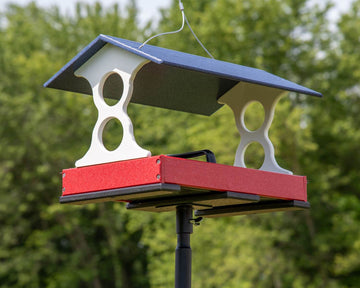

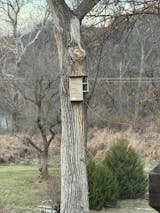
0 comments